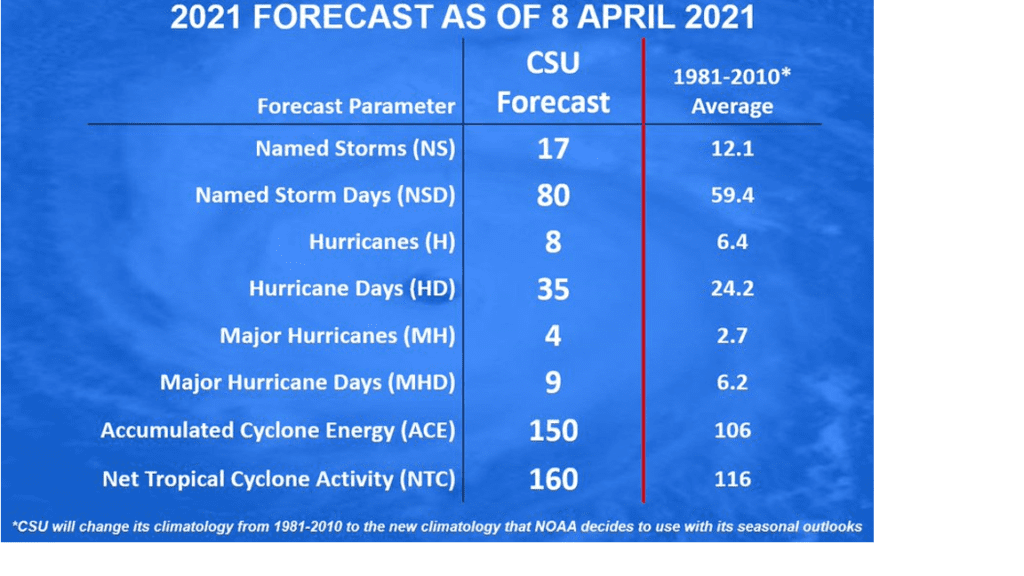Following the most storm-packed season on record in 2020, hurricane forecasters are expecting another extremely active season in 2021. Phil Kotzbach and his forecast team at Colorado State University announced the results of their first long-range forecast for the 2021 Atlantic hurricane season Thursday, calling for above-average activity. In fact, this season is set to become the sixth-consecutive season with above-average activity,
The forecast team is calling for 17 named storms, compared with an average of 12.1, and 8 hurricanes, compared with an average of 6.4. The outlook also calls for four major hurricanes — up from the 30-year average of 2.7 — to move through the Atlantic this year. Major hurricanes have winds in the Category 3 range or higher, corresponding to 111 mph or greater.

The CSU team estimates there is a nearly 70-percent chance that the Lower 48 will be struck by a major hurricane this season, up from a roughly 50/50 shot in any given year.
In the outlook, Klotzbach states the primary reasons for above average activity this year is the low likelihood of a significant El Niño event and the relative warmth of the tropical and subtropical Atlantic waters. When El Niño is present, it reduces Atlantic hurricane activity due to increased vertical wind shear — changes in wind speed and direction that prevent hurricanes from forming. Klotzbach feels the current La Niña will probably dissipate going into the summer, with the Pacific transitioning to an ENSO-neutral state. ENSO-neutral conditions or even La Niña conditions create a more favorable environment for tropical storm development.
Klotzbach notes sea surface temperatures, both broadly across the Atlantic basin and in the southwest Pacific Ocean, have also started the year running a bit above average, something that’s historically been tied to more active seasons.
The CSU team also identified the likelihood that storms in the Atlantic will burn through about 150 ACE units of energy. ACE, or Accumulated Cyclone Energy, is a measure of how much energy a storm transforms into wind, and it’s a good indicator of a season’s activity. Stronger storms tally up more ACE, while weaker storms hardly net any. The average for a season is 106 units.
The National Hurricane Center’s official hurricane forecast will be released in mid-May and early indications are it will also point toward an average to above-average season.
Bob


Social Media